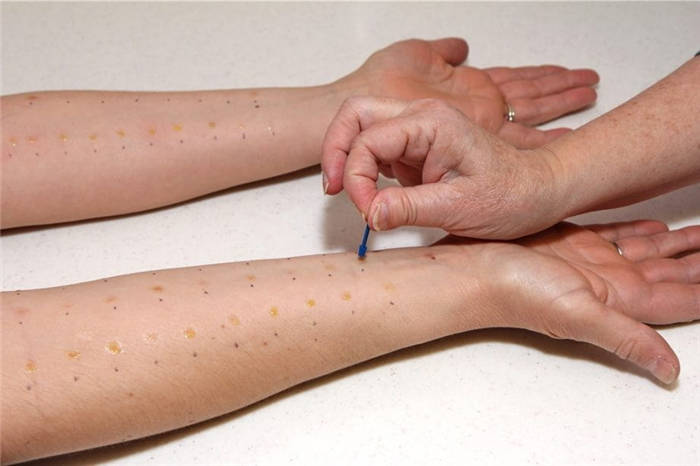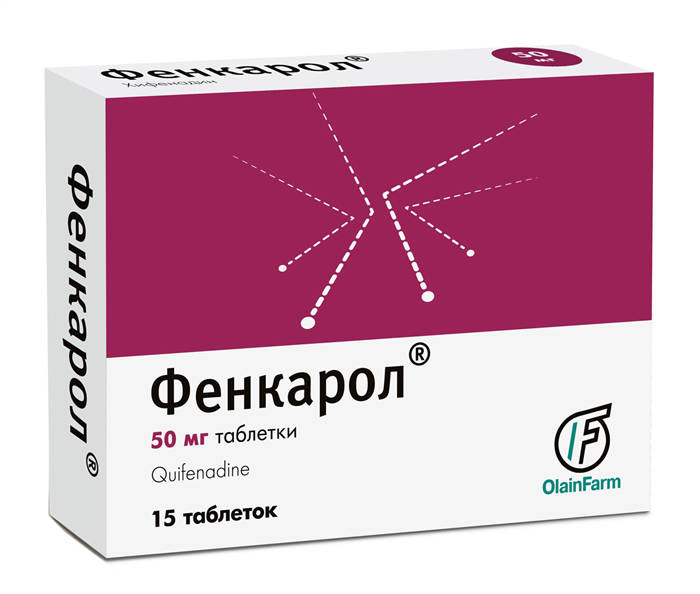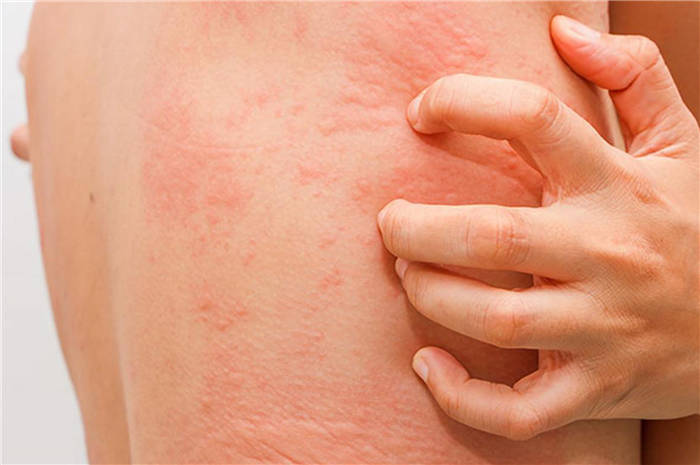Image 1.1. In an allergic reaction to cats, most patients experience general weakness, malaise

- Cat allergy
- Symptomatics
- Causes of allergies to cats
- How do the symptoms of cat allergies appear?
- The following signs appear most often:
- Cold allergy and its symptoms
- Allergies to dust or household chemicals
- Infant cat allergy
- Cat allergy in the infant: symptoms
- Cat allergies: treatment
- Home test for cat allergy
- Are there hypoallergenic cats?
- However, there are certain criteria in choosing a pet that will help reduce the likelihood of allergies:
- Measures to combat allergies
- How can I get rid of my cat allergy?
- Symptoms of dog allergy in children
- Diagnosis of allergies
- Why cross-allergies develop
- How cross-allergies manifest themselves
- Cat allergies: treatment and prevention
- "Hypoallergenic pets
Cat allergy
Doctor of allergology (immunologist), Doctor of Medicine, member of the Russian Association of Allergologists and Clinical Immunologists and member of the European Academy of Allergy and Clinical Immunology (EAACI).
Judging by the number of complaints made to allergists, we can say with certainty that cat allergy in adults is a widespread phenomenon.
Many people mistakenly believe that allergies are caused by animal hair. But this opinion is mistaken. Wool is an allergen carrier, but it itself is safe. The allergen that causes allergies to cats in adults and children is cat protein, traces of which remain on all objects with which the animal has come into contact. Naturally, cat fur is a real "storehouse" of feline protein, which has caused the spread of not entirely accurate information about allergies to cat fur, which in fact is not the root cause of the disease.
The cleanliness of cats is more of a disadvantage for allergy sufferers in this case. Cats are constantly licking their fur, leaving their protein residue on it. This hair then ends up on furniture, walls, floor and clothing. A person prone to cat allergy, even unnoticed, comes into contact with this hair, and the result is an allergic reaction of the body. Moreover, with hypersensitivity, the reaction can occur even when communicating with a person on whose clothes or skin traces of cat protein are left.
Symptomatics
Let's look at how cat allergies manifest themselves. In fact, manifestations of an allergic reaction can be of different types.
These symptoms may be accompanied by general weakness and even a fever.
The intensity of the respiratory symptoms varies from person to person. For some, they appear after prolonged contact with the cat, while for others the attack may start literally at the appearance of the animal.

- The appearance of irritation and itching on the skin;
- burning and itching;
- Rashes, blisters and redness.
Skin symptoms are usually manifested by direct contact with the animal. If the allergic reaction is expressed only in this way, then the patient will simply minimize the risks of their manifestation – it is sufficient to exclude contact with representatives of the cat.
If the allergen enters the food, the symptoms can manifest themselves in this way – a general deterioration of the condition, urges to vomit and pain in the stomach area. In this case, it is also important not to delay a visit to the doctor, so that a specialist will be able to make the correct diagnosis as early as possible.
It should be noted that all these symptoms are not unique and may indicate the development of another disease. Therefore, accurate diagnosis and determination of the cause of the symptoms is key.
Only a doctor can accurately diagnose the disease. Do not delay a consultation-call us at +7 (495) 775-73-60
Causes of allergies to cats
Allergic reaction to pets can occur at any time for anyone. Adults and children alike suffer from allergies to pets.
Most people with allergies to cats may also have a hypersensitivity to pollen. It has also been found that this disease has a genetic basis. This means that if someone in your family has had allergies in the past, you're susceptible, too.
An allergic reaction occurs when… the immune system mistakenly reacts to substances that in a normal person cause no reaction: it produces many antibodies to fight the the allergen.
When the body comes into contact with this substance after a while, similar symptoms appear because the immune system is already programmed to react harshly to an external irritant.
How do the symptoms of cat allergies appear?
The following signs appear most often:
They are usually the same as with any other allergies. However, the most important task is to determine the cause, namely the specific allergen.
Allergy Allergy to pets can be diagnosed in two ways: with a special injection or by taking a blood for testing. Both methods are equally informative, but the shot may result in a slight worsening of your well-being.
In general, one of the best ways to treat it is simply to avoid the source of it. This means staying away from cats.
When it comes to treating certain symptoms, itching, sneezing and runny nose are almost always treated with With antihistamines.
Air purifiers can also reduce or even completely eliminate allergic reaction to cats. This type of filtration reduces the amount of airborne allergens and makes the air cleaner.
Cold allergy and its symptoms
When the symptoms allergies on the skin become worse with constant contact with cold water or being outside in the winter, then it's it's an allergy allergy cold allergy. Keep in mind that allergy cold allergy is not an independent disease, but signals a serious violation of the immune or endocrine systems. The following symptoms may indicate allergy to cold:
- swelling Swelling of exposed body parts (hands, face, neck)
- Red and itchy skin
- dry and flaky skin
- pink rash on the face and chest
- burning of the skin of exposed areas of the body
- headache
- decreased arterial pressure
- breathing problems
- sore throat throatitching in nose, ears.
Allergies to dust or household chemicals
This type of allergies suffer most from young children and adults who have a hereditary tendency to allergic diseases, as well as people who suffer from a chronic form of the disease. For these people, any dust or any particle of any chemical substance will be perceived immune system as allergen and symptoms such as:
- allergic rhinitissneezing
- purulent conjunctivitis
- asthmashortness of breath
- clear sticky discharge from nasal discharge
- scabies and burning sensation in nose и throat
- headache, lacrimation
- redness of the whites eyesdeterioration vision
- Inflammatory processes of the airways
The cause of this type of allergies can also be domestic mites and their products, as well as dead cells of their epidermis.
Infant cat allergy
Infant cat allergy is complicated by the fact that a small child can not say that he has a scratchy throat or difficulty breathing. Only careful observation by parents and immediate contact with a pediatrician will be able to identify the main symptoms of the disease, determine the causes of their occurrence and make the correct diagnosis.
Cat allergy in newborns can manifest itself without direct contact with the animal, just a cat walking somewhere nearby and spreading together with the hair its aggressive protein, and the child breathes this air.
Cat allergy in the infant: symptoms
But even the baby's anxiety should make the mother go to the clinic and take blood tests, also undergo all the diagnostic measures that the doctor will advise. Do not delay going to the doctor. Only he will determine why your baby is crying, sneezing and coughing – either it's a common cold or an allergy to your pet.
Cat allergies: treatment
Can cat allergies be treated? Yes, the important condition is to see a doctor in time. And the main condition for effective treatment is the isolation of the person from the allergen, that is, the elimination of those trace elements that are allergenic to the body.
It is the main task of the doctor to find out which component gives allergic reaction, and then he excludes this component from contact with the patient. Treatment complexes are developed individually, but may include both medications and physical therapy and folk remedies.
When prescribing to children, the doctor takes into account the danger of drugs to the body of the newborn, so hormonal ointments or pills with antibiotics are prescribed to babies very rarely – in cases where other treatment is not effective.
Cat allergy and its treatment is a long process with strict observance of all the doctor's recommendations. But the main and first condition is the isolation of the patient from the allergen.
Home test for cat allergy
Before treating a cat allergy, it is worth testing yourself and your child.
The allergy test allows you to identify the main allergen. But what if it's not at all pet hair, and shampoo or food? Then you should not take the cat out of the house, but the main allergens. The test will also answer a number of other questions:
Home test for cat allergies can be that you call a specialist at home, which takes the appropriate samples:
The doctor will gather a medical history and conduct the tests – according to his methodology. Today – there is a huge variety of them, for example, methods in vitro – without the participation of the patient or in vivo – with the participation of the patient.
Do cat allergies pass? The answer is yes, it is important that the treatment of cat allergies begins with professional diagnostics and identification of the main allergen.
If you or your children have any health problems contact Allergomed Clinic. Our specialists quickly and painlessly diagnose, identify the allergen and successfully relieve patients from this dangerous and complex disease, both adults and very young.
Are there hypoallergenic cats?
First of all, it is necessary to answer the question: what exactly does the allergy develop to allergy when in contact with a cat? The allergen Fel D1 is a protein that is excreted in the saliva, skin cells and urine. urine. So even getting a hairless cat, such as a sphinx, does not guarantee that you will not allergic reaction.
However, there are certain criteria in choosing a pet that will help reduce the likelihood of allergies:
- Animals with light-colored fur;
- Small kittens produce fewer allergensThe males are less allergic than the males; therefore, this indicator will increase with age;
- females are less allergenic than males;
- early castration also reduces allergen production of allergens is also reduced ..
If we are to choose, it is better to choose hairless cats (sphynxes, Lycoys, Peterbalds) or cats with short curly hair (Cornish-raxes, Devon-raxes), because in these breeds allocation of allergens is somewhat reduced.
Measures to combat allergies
It should be remembered that allergies Each person has a different degree of allergy. When symptoms appear, for example, swellingand difficulty breathing, as well as less severe ones (coughing, oozing from eyes и nasal flowsIn the case of other symptoms (e.g., cough, nasal leakage, conjunctivitis, etc.), you should consult a physician for the selection of an individual treatment. However, in addition to the use of medicines, there are basic recommendations that can reduce the accumulation of of allergens in the environment and on the animal itself.
Individual hygiene is the main point of the rules. Wash your hands thoroughly after contact with the cat. Do not touch or bring your hands to your face immediately after contact with the animal.
Regular cleaning of the house. This item means Removing hair from surfaces with a vacuum cleaner, as well as doing wet mopping. The more often you do this work around the house, the less allergens will accumulate of allergens on surfaces.
Air purification. This may include both air ventilation and air filtration.
Taking care of your pet. It is recommended that you wash your pet about once a week, but you should consult your veterinarian before doing so. vetIt is important to choose a suitable cosmetic. If you have a furry animal, combing it out will avoid unnecessary accumulation of hair on other surfaces in the house.
Restrict access. If possible, close off access to the bedroom. Do not allow the pet on your bed or in places not meant for it. It is also worth mentioning that since 2020 there has been a food on the market which contains an additive that significantly reduces the production of Fel D1 protein in cats. These studies have been conducted for a long time and have scientific evidence, also tested with the participation of allergic people.
So, we conclude: hypoallergenic cats do not exist, but using specialized food and following some rules, you can keep the pet at home and minimize allergic symptoms. It is also worth remembering that with more serious manifestations allergies (swellingSwelling, shortness of breath, etc.) doctorIt may be that the only solution is to give the cat to someone else.
How can I get rid of my cat allergy?
If you are allergic to cats, how to get rid of the problem can advise an allergist. It is possible to accurately determine the allergic reaction only after the laboratory examination. It cannot be completely eliminated, so all treatment methods used are aimed at controlling the symptoms and preventing its occurrence. The main therapeutic measure is to exclude or minimize contact with the allergen. If you already have a pet in the house, and the owner does not want to get rid of it, you will need to constantly take anti-allergen medications.
The drug Fencarol ® can help you cope with allergic symptoms. The drug has a triple action – it inhibits the activity of histamine, serotonin receptors and promotes the elimination of histamine from the body.³ The drug may be used not only to treat allergies in adults, but also to relieve allergic symptoms in children from 3 years. 4 Before use, it is recommended to make sure that the drug does not cause a sedative effect by taking a short course.³

Image 1.3. Fencarol® has no pronounced sedative action, so it can be used at any time of the day
Before using the drug it is recommended to consult a doctor
If a cat allergy is detected, the drug is selected taking into account the age, the degree of manifestation and the nature of the symptoms. When the clinical picture is complemented by tissue edema, the patient is prescribed antiedematous agents. Treatment can also be supplemented by taking corticosteroids. Such drugs are not intended for continuous use, since they negatively affect the liver and have many side effects.
In addition to symptomatic treatment, regular prevention is important to minimize the recurrence of symptoms. If possible, it is worth excluding direct contact with the allergen. When a pet lives at home, you need to pay special attention to the care of the pet, using special products. It is equally important to clean regularly, get rid of hair, ventilate the room, and do not leave personal care products and clothing that can retain allergy particles in an accessible place.
Symptoms of dog allergy in children
- most commonly itching, burning, redness or the appearance of a characteristic rash (hives), especially in the area of scratching or contact with animal saliva;
- Nasal congestion, runny nose, allergic rhinitis;
- dry cough, difficulty in breathing, wheezing, shortness of breath, and possibly choking, bronchitis or bronchial asthma;
- red eyes, tearing;
- upset stomach, diarrhea, vomiting;
- Very rarely, severe reactions such as Quincke's edema and anaphylactic shock (a sudden drop in blood pressure, which can be life-threatening) are observed.
Signs of an allergic reaction can occur immediately after contact with the animal, or several hours later.
Diagnosis of allergies
A special blood test (radioallergosorbent test) or skin test can be used to determine exactly what is causing the child's allergic reaction.
The doctor may also suggest that the parents live without the pet for a while (give it to relatives or friends). To definitively confirm the diagnosis of a dog allergy, it is better for the child to live in a place without pets for at least a month (not even visitors with dogs). If the allergy symptoms disappear during that time, you can absolutely say that your dog is the cause of the negative reaction.
Why cross-allergies develop
To understand what a cross-allergy is , it is necessary to understand in more detail such a concept as the allergen. Most often the role of an allergen is played by proteins. Each protein consists of a set of amino acids arranged in a specific sequence. Many substances in nature have a similar structure – identical amino acid sequences. Due to increased sensitization, the immune system "evaluates" these substances with a similar structure as being of the same type and reacts to them in the same way. For example, a cross-allergic reaction to cheese, sausage, or sausage may occur if you are allergic to cow's milk. 1,3
Cross reactions usually occur between different foods, or between foods and plant pollen.
Most often cross-sensitization develops between these foods:
Cross-allergies between food allergens and plant pollen are very common. One of the most common examples is cross-allergy to birch pollen and to fruits and vegetables: apples, carrots, cherries, pears, spinach, celery, peanuts. Quite often in the presence of an allergy to birch pollen an allergic reaction to honey occurs.
Another common cross-allergy variant is the so-called "cat-pork" syndrome. If a person is allergic to cats, there is a high risk of developing an allergic reaction to pork. At the same time, the allergy may not appear every time you eat pork, but only when the meat is insufficiently heat-treated. 1,3
Cross-allergies to medications are quite common. Cross-allergy most often occurs between medications of the same pharmacological group, such as beta-lactam antibiotics, cephalosporins, or nonsteroidal anti-inflammatory drugs.
More rare is latex-fruit cross-allergy. Allergic reactions to latex gloves, condoms and other latex products can result in cross-allergies to avocados, bananas, kiwi, tomatoes and potatoes.
How cross-allergies manifest themselves
Each type of allergy is characterized by specific symptoms. For example, food allergies most often have gastrointestinal symptoms, dyspepsia, and skin symptoms. The severity of symptoms may vary. The mild course of the disease is characterized by indigestion and rash. If the disease is severe, ulcers in the mouth, inflammation and swelling of the tongue and other symptoms of severe gastrointestinal damage may occur immediately after contact with a food allergen.
Pollen allergy is more characterized by damage to the mucous membranes of the nose, eyes and upper respiratory tract. Pollinosis is usually manifested by allergic rhinitis and conjunctivitis. Symptoms of bronchial damage may sometimes join. Skin rashes and phenomena of dyspepsia are not characteristic of plant pollen allergy. 1,2
But when a cross-allergic reaction develops, the symptoms of the disease may change. The manifestations of the disease will depend on the substance to which the body began to respond with an allergic reaction.
If a food product becomes a new allergen to the body, the usual symptoms will be added to the symptoms:
Abdominal pain can be very severe, up to imitating the symptoms of an "acute abdomen." As a rule, the symptoms last from a few minutes to a couple of hours. General and skin symptoms may also occur: fever, weakness, headache, urticaria. If a cross-reaction between two foods develops, the symptoms may remain the same, but their severity will increase. 2,3
When a cross-allergy to an inhaled allergen develops, these symptoms usually appear:
In the more severe course of the allergy, an allergic cough may join the listed symptoms. 2,3

Image 1.2. Urticaria with generalized rashes all over the body can be a symptom of both food allergies and pollinosis.
Cat allergies: treatment and prevention
To prevent and reduce the intensity of allergic reactions, you can:
- Ventilate the room thoroughly;
- carry out damp cleaning daily;
- try to keep the cat in a separate room from the child (keep the bowl, the cat's litter box, the basket in places where the baby is little);
- remove carpets and replace carpeting with washable carpeting;
- wash the pet regularly (up to twice a week);
- feed the pet quality food.
Treatment of cat allergies should be prescribed by an allergist. As a rule, it includes taking antihistamines and sometimes anti-edema medications, as well as local remedies to reduce the symptoms (eye and nose drops, etc.).
"Hypoallergenic pets
Despite the claims of some breeders, there are no cat breeds that are completely allergy-free. Nevertheless, it is believed that the safest breeds in this regard would be kittens of the Devon Rex, Cornish Rex, Canadian Sphynx, Bombay.
It is also believed that cats are less likely to cause adverse reactions than cats. Neutering the animals also helps to reduce the risks.
Finally, if you certainly want to have a pet, it is worth knowing that dogs cause allergies half as often as cats.






